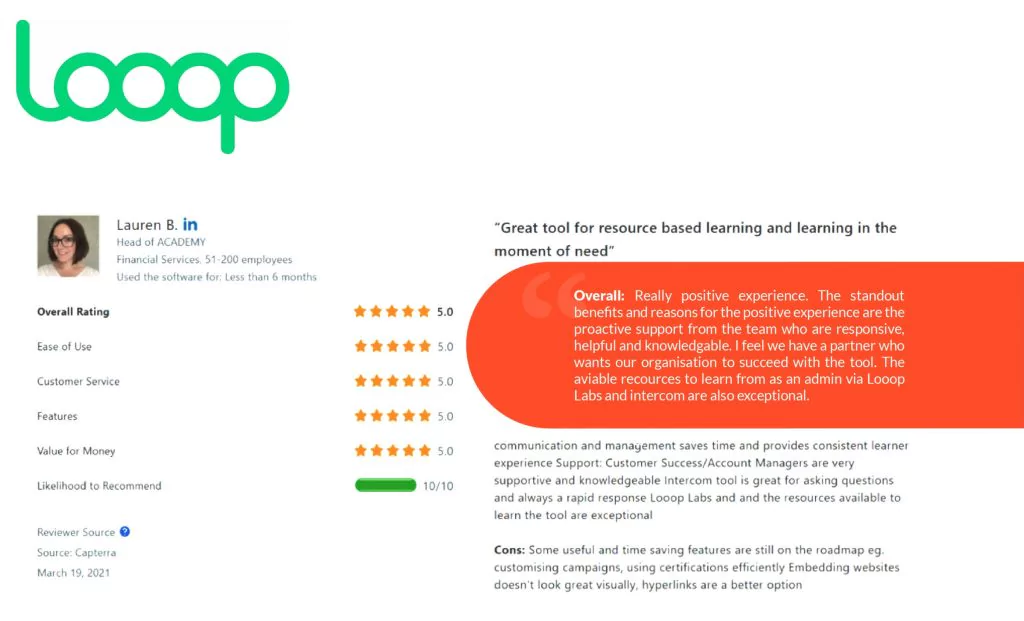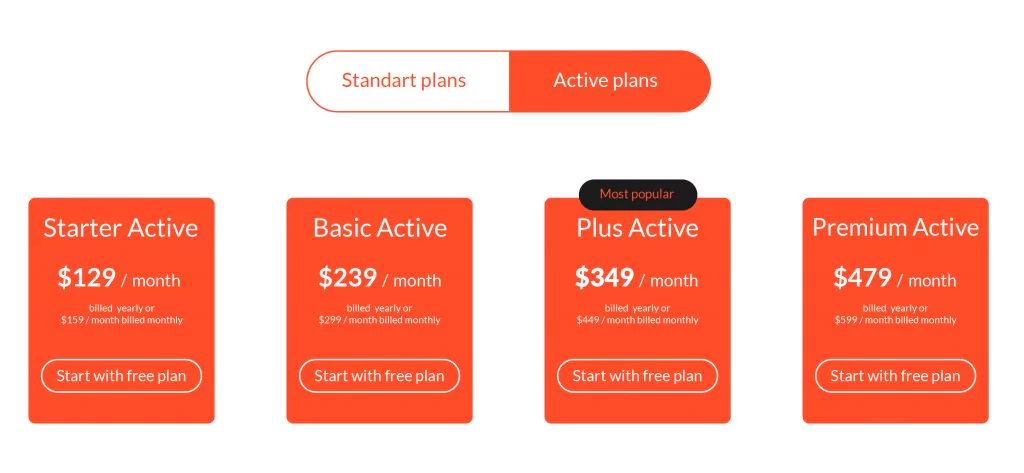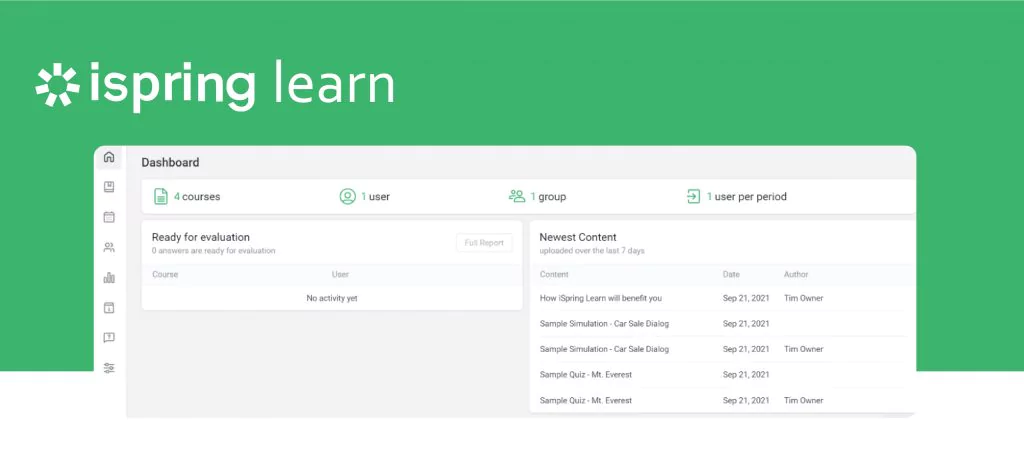Because of the pandemic, online learning has become the main tool for getting knowledge and acquiring skills. This is not just about schools and colleges anymore. Company owners deliver training to their employees to help them become better experts in their fields. What’s more, SaaS companies also use LMS solutions to explain to customers how to use their applications.
Although the most used LMS provide learning benefits for users, they still have some drawbacks that drive away enterprises. In this blog post, we will reveal the secrets of learning management system development, so you’ll be able to build a solution that addresses the most common learning problems.
We at JatApp know a thing or two about all aspects of developing a learning system. Our projects in the educational sector include an edtech platform for the Cypriot company, and also PreQuest, a responsive educational solution that enables students to prepare for the ISEB pretest by completing engaging and creative tasks.
Let’s start from the beginning: what use case do you want to target with your LMS?
Step 1: Define your use case
Companies turn to LMS development to satisfy their specific business needs, so your task is to offer a solution to meet these needs. It’s important to determine who you are going to develop a learning management system for. Identify your target audience, their problems, and come up with ideas on how to solve them. Let’s look at the most popular LMS use cases to help you focus on one or several “jobs to be done” when faced with custom LMS development.
Employee onboarding and continual learning
Within this use case, you should build an environment that will be effective and convenient for employees’ onboarding and continual online learning. Glovo, a food delivery startup, uses EasyLMS to onboard couriers all over the globe. Before being hired, each candidate should take a course in EasyLMS. This pre-hire learning initiative greatly reduces the company’s costs on courier training.
Coaching sales reps to win more deals
One of the main benefits of using LMS is the possibility to train people from other countries and continents. This way companies can coach their sales representatives from all over the world without the need to gather them in one place. For example, L’Oréal uses iSpring Learn to train their sales teams.
With the right approach, a custom LMS can turn into a powerful tool to promote products and, as a result, enhance profit. For example, companies can create marketing presentations in different formats, add these materials to the LMS, assign them to their sales representatives who can access the app with their iPads to present the content to the customers.
Training partners to sell and support your products
Modern LMSs enable companies to train their partners across the globe to effectively advertise their products and enhance sales.
For example, TalentLMS helped Formlabs (3D printer manufacturer) address a huge challenge. They used to spend too much time explaining the theory to their partners and didn’t have time for on-hand training. TalentLMS allowed Formlabs to build a powerful online partner education system that opened new business possibilities for the company.
Training customers on how to make the most of your products
Customer training is important for any business niche, but it is especially critical for SaaS. Unlike physical products, many SaaS applications are complex and involve a significant learning curve. Cloud based LMS solutions can allow SaaS companies to store and distribute their training content with efficiency.
By showing to users how to use a product, a company enhances customer experience and reduces churn and the number of customer support requests. Plus, by organizing online learning through an LMS, a business owner saves a huge amount of money and resources. For example, Cubex (a developer of medical solutions) picked SAP Litmos LMS to deepen their customer’s knowledge of the Cubex’s products.
Step 2: Understand your market better
When developing a learning management system, you shouldn’t forget that the market is already full of successful solutions. It’s unwise to underestimate the competition.
The LMS market is rapidly developing, forcing existing platforms to constantly improve their functionality and LMS UX. According to research, by 2027, the LMS market will increase to $3.6 billion. It was $1.6 billion in 2020.
Emerging startups are breathing down the necks of established LMSs. Among recent ones, LearnUpon developed an effective LMS environment and raised $56 million to further develop their LMS platform.
Now let’s look at other top LMS solutions on the market.
Based on the Capterra reviews, the number-one LMSs for enterprises and SMBs are Looop, Acadle, and Trainual. Let’s see why these services are so popular among users.
Looop: User friendly LMS for enterprise
Looop is a powerful LMS platform for teams. It may also be called a learning delivery machine because most learning delivery operations on this platform happen on autopilot. Employees automatically get materials (or messages) to their inbox, team chat, or phone, so administrators don’t waste time coordinating the process. Course admins effortlessly create, edit, and share content and employees (learners) can seamlessly access it. It is a simple and straightforward tool for corporate online learning.
Users choose Looop because of a great number of useful features, such as automation, analytics, user insights, resource builder, integrations, and so on. Some clients claim that the support team also matters, and with Looop it’s truly helpful.
Looop offers four subscription plans that differ in the number of users:
- Small Business ($299 per month, up to 50 users)
- Mid Size Business ($699 per month, up to 250 users)
- Enterprise ($1199 per month, up to 500 users)
- Enterprise Plus (more than 500 users, you should contact the team to know the price)
Acadle: LMS for marketing, training and onboarding
Acadle is a functional LMS online platform for enterprises, SaaS companies, and agencies. It is actively used to promote products, educate customers, and train employees. Depending on the use case, you can choose among three plans ‒ Marketing Plan, Onboarding Plan, and Training Plan.
Thanks to a helpful set of features, the platform is among top LMS solutions on the market. Naming all these features would require a lot of time and space on the page, so we’ll try to highlight the most significant ones.
For example, you don’t need coding skills to create a course. Also, the platform is powered by an advanced editor to build lessons. And finally, reporting features enable users to analyze how effective training was.
Most users say the Acadle learning management system is really easy to use and rich in features.
Trainual: LMS to build a business playbook
Trainual allows users to build business manuals or playbooks and deliver consistent training. It is suitable for businesses and individual teams within organizations. Like previous platforms, Trainual is focused on employee training, onboarding, and testing. What’s more, it offers more than 150 templates to help you get started faster and simpler. The platform supports a long list of integrations that optimize the learning process. Team managers can track the progress of the team and evaluate its activities. Many users claim that it’s an extremely easy-to-use platform that completely copes with the required tasks.
Despite valuable functionality and a range of possibilities, not all customers are satisfied with the Trainual LMS pricing, though. Let’s see how much they charge. There are two plans ‒ Pro and Premium. The Pro Plan costs $99 a month, while the Premium one is $149 a month.
Step 3: Define how to monetize
We have already seen some pricing models of the most used LMS systems, according to the Capterra ratings. To get a deeper understanding of how to price your solution, let’s look closer at Adobe Captivate Prime and TalentLMS business models.
Adobe Captivate Prime has two pricing models available ‒ Registered User Pricing and Monthly Active User Pricing. If a company chooses the first model, they pay $4 per registered user. There should be at least ten users, and if there are more than 500, the enterprise gets a discount.
The second model is suitable for companies that have floating user licenses. Such users get on-demand access to the platform. The cost is not indicated on the official website. You should contact the Adobe team for more details.
Speaking of TalentLMS, its pricing models are divided into two groups ‒ Standard and Active. Standard plans are strictly limited in the number of users and offer five subscription types:
- Free
- Starter ($59 a month if paid yearly, $79 a month if paid monthly)
- Basic ($129 a month if paid yearly, $159 a month if paid monthly)
- Plus ($249 a month if paid yearly, $329 a month if paid monthly)
- Premium ($429 a month if paid yearly, $529 a month if paid monthly)
In its turn, Active plans are not limited in the number of users and provide four subscriptions:
- Starter Active ($129 a month if paid yearly, $159 a month if paid monthly)
- Basic Active ($239 a month if paid yearly, $299 a month if paid monthly)
- Plus Active ($349 a month if paid yearly, $499 a month if paid monthly)
- Premium Active ($479 a month if paid yearly, $599 a month if paid monthly)
As you see, there are many options when it comes to LMS pricing. Make sure you thoroughly research the market to better understand how to monetize your product. But we would recommend that you also offer a free trial period for users to test the product and decide if they need it.
Step 4: Balance user and business needs
How do you build your own LMS that will leave the competitors behind? Below are some tips on developing a learning management system that will be in demand among companies.
Up-to-the-minute UI
You shouldn’t mistakenly think that the most important thing for a successful LMS is the availability of all basic features, like a course builder, assessment and reporting tools, and such.
A good LMS platform is a balanced combination of all elements, including attractive and engaging UI. Remember your school years when a teacher had to incorporate something unusual into a lesson (like a movie or a multimedia presentation) to capture your attention? Same here. An interface is the first thing a user sees and assesses, so it should be in line with the time. Take a look at the iSpring’s interface:
Looks good, doesn’t it?
And now, let’s compare it to Absorb’s UI. See the difference?
Extended customization options
Users want to work in a convenient environment that perfectly matches their personal goals. So let them create this environment by themselves! You should make sure your platform is easily adjustable and offers different features to different roles.
For example, on TalentLMS there are three roles ‒ Administrator, Instructor, and Learner, and you can flawlessly switch between them. Depending on the role chosen, a user sees a dashboard optimized for their needs. As a Learner, you can view and participate in courses. If you are an Instructor, you can add content to the course. As an Administrator, you can create courses and customize the homepage by adding banners, text and media.
is an invaluable tool to make a user feel at ease when taking an online learning course. By integrating build a tutoring platform into corporate training, a company expects to get a platform that does not only include their brand visuals and slogans but also delivers a convenient experience for users.
User engagement for better learning
It is crucial to develop a learning management system that improves learning outcomes. Some platforms ignore this principle and deliver a plain learning tool without video support, live quizzes, and other interactive features that motivate learners and make education fun.
But it’s definitely not about Absorb LMS. The platform offers an abundance of tools to captivate and engage the learner. The online learning service supports most multimedia content formats (videos, webinars, documents) and offers an intuitive navigation.
Plus, learners can create social profiles, win badges and earn certificates. Such gimmicks are essential to make users engage with the content offered on the platform and come back for more.
Adequate reporting
Although most LMS platforms provide reports, such as how many people are taking a course or how many points they earned, they still fail to deliver comprehensive information about how effective a course was. When building an LMS, look beyond traditional test scores and the number of users participating in a course.
Let’s take a look at the Reports page on TalentLMS.
As an Administrator, you can view various reports (user, course, branch) and assess the completion of courses. You can see when users log in and if they interact with the content.
Because there are many learning management system examples that provide sufficient reporting features (AbsorbLMS, Adobe Creative Prime, and others), the competition is high. Your LMS software should deliver reporting options that are valuable for the user.
Built-in integrations
While developing a learning management system, you should incorporate as many useful integrations as you can. Let me explain what we mean here. Imagine you are the owner of a company that specializes in content writing. You need an LMS to train your writers. What integrations should your LMS platform have? Of course, it should be integrated with an email service, grammar checker, writing platform (for example, Google Docs), a video app to communicate, perhaps some dictionaries, and other apps. The takeaway: you should analyze companies you target and implement integrations to serve their needs.
Let’s look at the Docebo LMS. It integrates with a payment system (PayPal), an e-commerce platform (Shopify), and web conferencing platforms (GoToWebinar and Zoom). The Docebo’s development team packed the platform with an array of integrations. We think they did a good thing.
Step 5: Launch it to the market!
When you feel that your LMS software is ready for the market, launch it! But remember that your platform still needs a dedicated team to support it. For example, when we developed an edtech solution for a client from Cyprus, we provided a crew of frontend, backend, mobile developers, and QA engineers as well as support managers to deal with users’ requests after the product release.
Mind that creating a great LMS platform is only half the battle. Today your platform is powerful and tomorrow it might become outdated. You should constantly maintain and improve your LMS service. Regular updates and new useful features will help you become the market leader and remain on top. Contact us if you want to empower your business with an advanced digital solution.



















